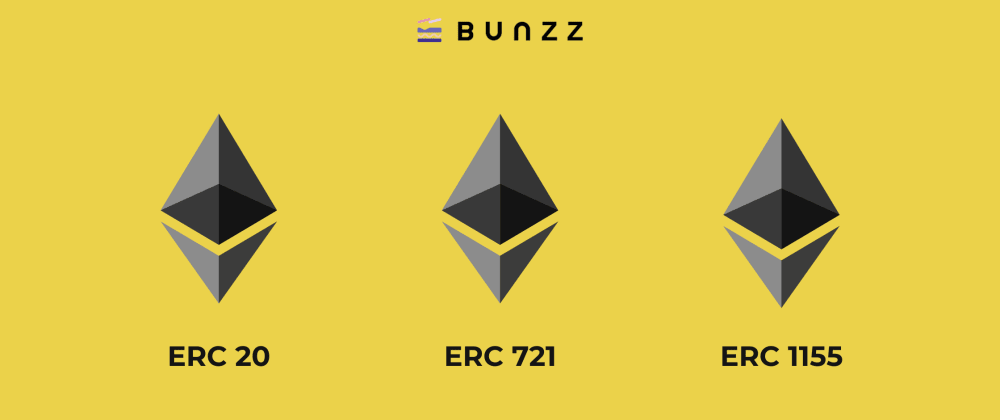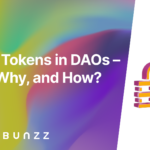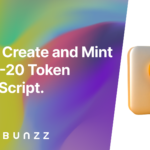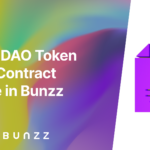ERC stands for Ethereum Request for Comment, and addressing this topic will help us better understand the reach of many blockchain use cases.
ERC standards, in a way, define the standards for writing the smart contract that regulates the token activities on Ethereum.
Among others, three important protocols or token standards have been given the go-ahead by the Ethereum blockchain network to function inside the ecosystem: ERC-20, ERC-721, and ERC-1155. These are the most often used token standards because Ethereum is the market’s most well-known and dominant blockchain.
These token standards differ from one another in specific ways that define them. Let us first offer you a general notion before going into further detail.
The three token types depend on the development of NFT and the level of fungibility. The first token released to the Ethereum blockchain was ERC-20. It was used to mint fungible tokens and still is. Then the system introduced a new non-fungible token standard, ERC-721, which creates tokens. ERC-1155 became active in 2019. This token is a cross between the other two.
The USP of ERC-1155 is the ability to create non-fungible, fungible, and semi-fungible tokens in a single, smart contract.
Let’s have a closer look at each one of them.

Evolution of Ethereum token standards
ERC-20 (Fungible Tokens)
ERC-20 was proposed in 2015 and finally integrated with the Ethereum blockchain in 2017.
On the Ethereum blockchain, smart contracts are issued and created using the ERC20 token standard. The decentralized ecosystem makes extensive use of the script token standard for a variety of uses. Since ERC-20 is a collection of rules that control certain blockchain operations, organizations and governing bodies make up most of its users.
ERC-20 is a fungible token that can be used for identical entities, as you are already aware. Because of this, it can be used to establish stablecoins, ICOs (Initial Coin Offerings), crowdfunding, and related activities.
The following digital assets might theoretically be represented by an ERC-20 token:
- Tickets for an online contest.
- Real-world financial assets include a company’s stock, share dividends, etc.
- Points earned through online gaming.
- Other redeemable points.
The 2017 crypto bull run may have been crucial in developing ERC-20 tokens. A few prominent examples of cryptocurrencies built on the ERC-20 token basis are Tether, Chainlink, USDC, and DAI. Despite being the widely accepted token standard, it cannot be the jack of all trades, As a result, the new Ethereum token standard was later introduced.
ERC-721 (Non-Fungible Tokens)
Unlike ERC-20, ERC-721 is specialized in non-fungible tokens. In other words, according to the rules of this token, digital entities that are singular and cannot be replaced by anything are created.
ERC-721 is essential for digital assets that don’t always take the form of a digital currency, just as ERC-20 was crucial for introducing new cryptocurrencies to the market.
CryptoKitties’ founder and CTO Dieter Shirley first proposed the new token as an Ethereum Improvement Proposal (EIP) in 2017. It was finally accepted by the blockchain’s regulatory body in 2018.
ERC-20 is important for discovering new cryptocurrencies. Likewise, ERC-721 is also necessary to develop novel and intriguing NFTs that serve as immutable ownership proof.
Let’s understand what can ERC-721 represents:
- A unique digital content piece.
- Real estate property.
- Social media content Tweets, Videos, and pictures.
- Gaming assets and collectibles.
- Gaming characters.
You’re now experiencing a recent spike in NFT, which can be attributed to ERC-721’s introduction. The development of a market for creators, gamers, and anybody else with something special to sell was made possible by the new protocol.
Without this token standard, the artist Beeple would not have been able to sell a $69 million digital work of art.
ERC-1155 (Multi-tokens)
ERC-1155 opened a new door in the Ethereum blockchain in 2018 and was created by Witek Radomski, the CTO of Enjin. In a single, smart contract, users could create both fungible and non-fungible tokens. In essence, it helped to fill a void in the market. ERC-1155 is a game-changer since it allows you to find all the solutions you need for NFT in one location.
ERC-1155 token can represent the following:
- Tokens.
- NFTs.
- Redeemable shopping vouchers etc.
Additionally, the user-friendly design was a far more effective environment for newbies. In their own words, the fundamental idea behind ERC-1155 is that a single smart contract can control an almost limitless number of tokens. Another benefit for artists and gamers is that the new coin cuts gas prices by 80% to 90%.
According to Radomsk, “Horizon Games creator Phillippe Castonguay achieved 80–90% gas savings compared to standard transfers by using a technique called Balance Packing (keeping 16 lower-resolution tokens in a single ID).”
Closing Thoughts
These three token standards are a very effective and open digital ecosystem. In the coming years, it won’t be shocking to witness a significant breakthrough in blockchain due to the considerably faster rate at which token standards evolve.
If you want to build and deploy all ERC tokens in less than 10 minutes with little or no codes – use Bunzz DApp builder and check out this video guide to deploy an ERC-721 token (NFTs).
Let’s connect on Twitter.







